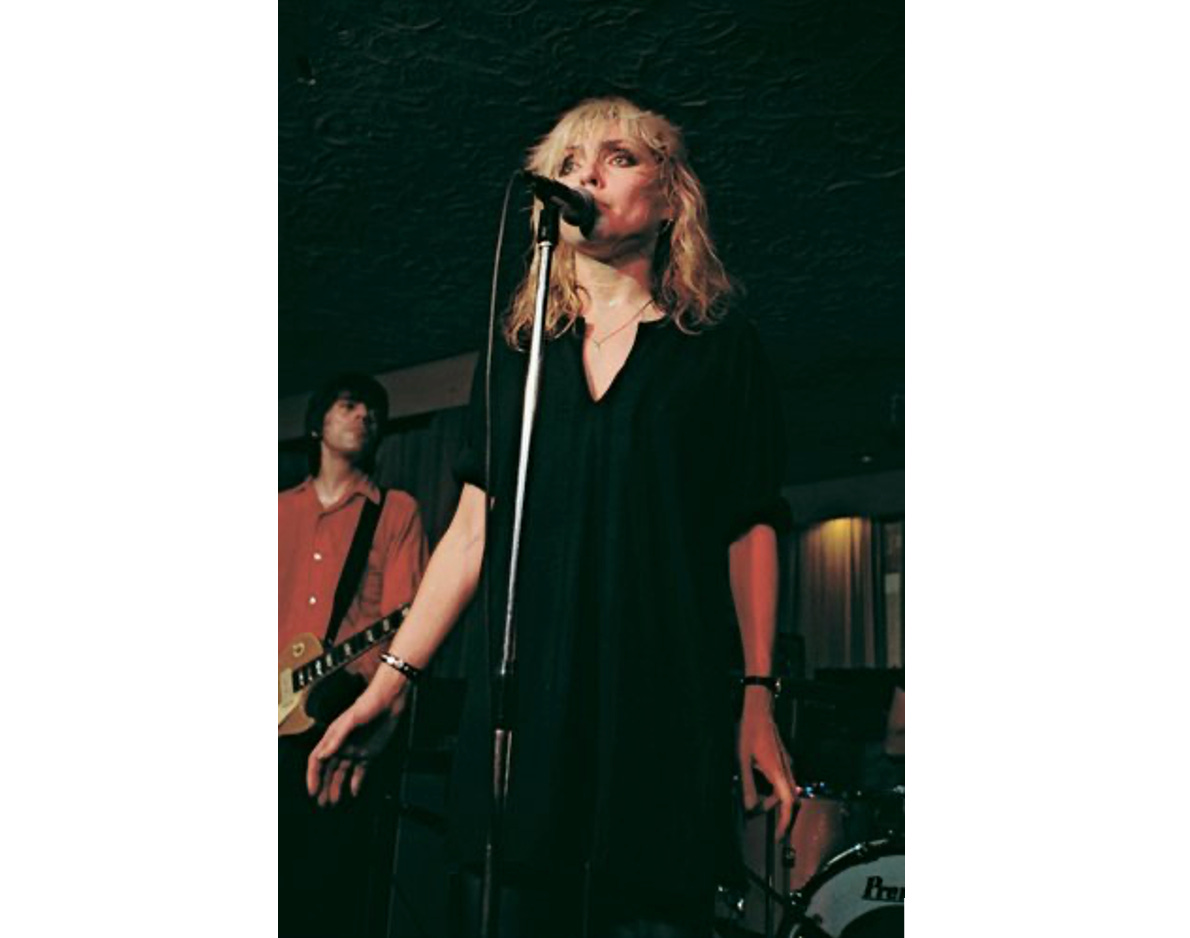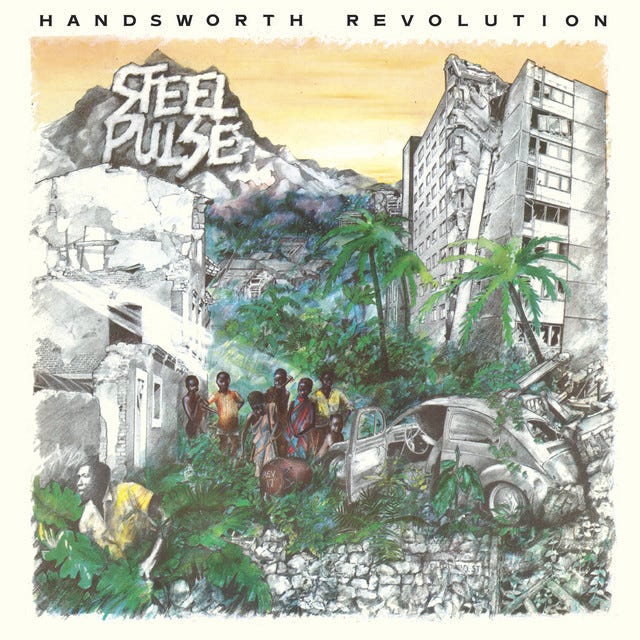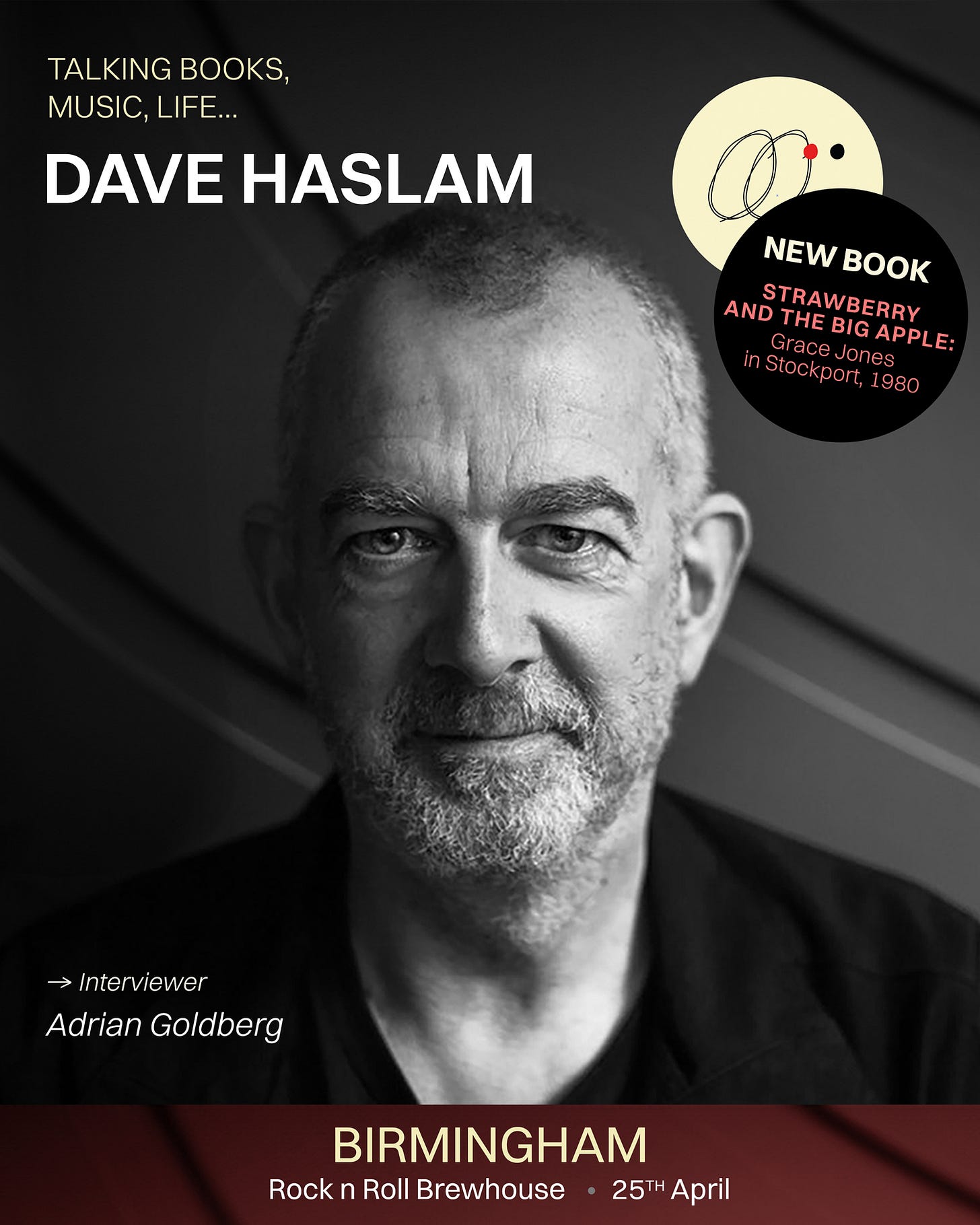There was Motown, and Hendrix. There was ‘Paranoid’ and then Slade. There was my older sister’s love for Rod Stewart & the Faces. There was Top of the Pops, Revolver, The Old Grey Whistle Test.
By January 1978 my life was revolving around the weekly music paper NME and John Peel’s radio show. That month I turned sixteen, obsessed with music. Four weeks later, I took the bus into town from my home in the Birmingham neighbourhood of Moseley, to see Blondie at Barbarella’s on Cumberland Street.
On April 25th I’m in Birmingham talking music, books, and life with Adrian Goldberg at the Rock & Roll Brewhouse. Breaking into my memory bank for the experiences that lit up my teenage years seems like a good idea, in preparation and celebration.
In 1977 I’d seen the Stranglers and Steel Pulse at the Mayfair Suite and Eddie & the Hot Rods at the Town Hall, but the trip to see Blondie was I think, my first experience of Barbarella’s, a venue I would return to again and again. There was a kind of romance to the ritual of walking across town from the 35 bus stop and over to Barbarella’s, through the concrete underpasses, and unlit streets, passing an occasional late-night café, turning off Broad Street surrounded by boarded-up workshops and factories, and along Cumberland Street. You’d see a clutch of unfriendly doormen, and then finally you’d be through the doors and arrive into a red corridor and then a different world. Loud music, adventure.
Barbarella’s was Birmingham’s established venue for punk and new wave acts (although I also saw Osibisa there). Prior to the bands playing, a DJ would pump out Clash singles and lots of reggae (oftentimes, Ranking Roger would be on the microphone, toasting, in a beautiful party-starting style. The dub of ‘MPLA’ by Tapper Zukie was a massive favourite of his, and the crowd lapped it up). The club’s capacity in the live room was maybe 500 (I’m guessing based on hazy memories)
The boarded-up old industrial buildings around Broad Street have long gone, replaced by hotels, restaurants, a conference centre, and a Bannatyne gym, and, around Brindley Square and behind the Symphony Hall and elsewhere, blocks of apartments.
I’d heard Blondie’s ‘Rip Her to Shreds’ single, and seen the photos, read the reviews and become fascinated by Debbie Harry. The band were from New York which connected with what I already knew about the Ramones but then some further digging led me to the scene at CBGB - Television, Patti Smith, Talking Heads - and then the roots of that American alternative rock scene; the Velvet Undergound and Iggy.
As well as Blondie and Osibisa, other acts I saw at Barbarella’s included Magazine, the Skids and Joe Jackson. Generation X were a real let down, I recall, and I took refuge in the disco room next door. The DJ played ‘Can You Feel the Force?’ by the Real Thing. A realisation dawned: whatever rock bands I would pay to see, I’d still have one foot in the disco.
I saw the Stranglers and Steel Pulse at the Mayfair Suite; Dr Feelgood at the Odeon; Talking Heads at the Odeon; the Cure, Bauhaus, and Misty in Roots at Digbeth Civic Hall (not all on the same night, regrettably); and the Clash at the Top Rank. And Siouxsie somewhere. And Steel Pulse a couple more times.
When Iggy came to Barbarella’s, I was in the mosh pit. That was May 1979; the New Values tour, with Glen Matlock on bass. A ragged ‘I Wanna Be Your Dog’, a divine ‘Endless Sea’ and an anthemic ‘I’m Bored’.
Debbie Harry and Iggy Pop were pop stars from afar, CBGB was unreachable across the Atlantic. But also I was beginning to pick up on a sense of culture and potential closer to home, notably the release of the Handsworth Revolution album by Steel Pulse.
Is it still the best album by a British reggae group? It felt so then, made especially impactful for me by the fact they were local. Also that they were addressing issues that seemed genuinely relevant to what was going on around us, particularly the threats of racism and racist violence. One of the other clubs owned by the family that owned Barbarella’s was called Pollyanna’s - through 1977 and 1978 evidence mounted that they were operating a racist door policy. A picket of Pollyanna’s was organised; predictably, the police arrested nine of the protestors, but eventually the management were taken to court by the Commission for Racial Equality.
Random violence on the streets, directed towards to anyone a bit different, in dress, skin colour, or just in the wrong part of town, was a constant presence. In the late 1970s, Jayne Casey was in a band called Big in Japan, alongside Holly Johnson (before he was in Frankie Goes to Hollywood, of course). Her flamboyant crew of unashamed weirdos – which also included Pete Burns (before he was in Dead or Alive) – was often confronted on the street in their Liverpool hometown. She once told me, “We attracted violence, every night”, but also explained that Pete Burns, particularly, could give as good as he got.
On tour with Big in Japan and in unfamiliar surroundings, though, Jayne learned to be more cautious. “I used to love Barbarella’s. That was the best laid-out club, all the dark corners. But Birmingham at that time was a scary space. People were angry, and the punks got that, didn’t they? In Birmingham punks couldn’t get into pubs. All the lads would go out after the soundcheck or whatever, and me and Holly would just sit in the dressing room.”
There was another significant moment – a year after seeing Blondie at Barbarella’s, I went to the Fighting Cocks to see two local bands, Spizz Energi, and the Prefects.
The Fighting Cocks had been built in the mid-1800s, with a function room on the first floor, which had a separate entrance to the left of the building. It was an undistinguished rectangle of a space with rickety wooden floors, and dirty curtains pulled across the windows. Onstage, the Prefects made a lovely racket and performed in a markedly unshowbiz way. Singer Rob Lloyd was unresplendent in a shirt, a V-neck pullover, an old man’s jacket, a pair of plain black trousers and very sensible shoes. He stalked around the stage, looking suspiciously at the audience, and barking his sarky, bitter, pointed lyrics. The Prefects inconveniently split up just a few weeks after I had decided they were one of my favourite bands ever.
I went back to the upstairs room at the Fighting Cocks as often as I could, and saw mainly local acts there; like the Dangerous Girls, Fast Relief, the Pinkies, UB40, and the Au Pairs. The Au Pairs were a Moseley-based four-piece, featuring Paul Foad, an exciting guitarist with an idiosyncratic, choppy guitar action and a female singer/guitarist, Lesley Woods. I loved them, and saw them six or seven times live. Jane Munro playing bass like some tiny Tina Weymouth and the drummer Pete Hammond moving from reggae-style rhythms to rock harshness as and when required. Paul Foad and Lesley Woods giving everything onstage, Paul attacking his guitar, Lesley wielding her guitar too, and singing with such an edge.
The Au Pairs were passionate, intent particularly on questioning traditional and misogynistic views about sexuality and gender. It was music on the front line. They made me think. I liked that; I wanted to know stuff. Their debates about violence and misogyny weren’t abstract, let alone irrelevant.
One of the three songs on the first Au Pairs first 7” EP was ‘Kerb Crawler‘. There were red light areas in the bedsit area of Moseley and down in neighbouring Balsall Heath, and a couple of what were then termed “battered wives homes”; houses that were designated as safe havens for victims of domestic abuse.In September 1979, the Au Pairs glued together the sleeve of that first record themselves and sold copies locally. I remember buying it in Prometheus, an alternative bookshop, up towards the Prince of Wales pub.
More gigs; the Au Pairs at the Golden Eagle on Hill St, Fashion in an art gallery, Echo & the Bunnymen at the Cedar club, and the Top Rank Suite for another show by the Specials.
In my autobiography Sonic Youth Slept on My Floor I talk more about Barbarella’s, and about the Au Pairs. Including my thrill two years after I started following them round when I bought the NME one week and Lesley from the Au Pairs was featured on the front cover. And I write about tracking down and interviewing Lesley thirty years later in East London, when she told me all sorts of probably unrepeatable things, including an encounter with Dexys Midnight Runners - specifically the band’s singer Kevin Rowland. It was a rum story, but I decided include it in the book anyway. Dexys were another big influence. I loved singer Kevin Rowland’s seriousness and soul.

In August 1979, I saw Dexys play at a nightclub called Romulus, slightly out of town, just passed Five Ways, on Hagley Rd. The support band; Joy Division. Joy Division had just released their debut album, Unknown Pleasures. Both bands became a big part of my life. The first Dexys album I played to death. I knew all the words, and I loved Kevin’s spikiness in interviews. And, subsequently, the way he embraced new ideas, evolved the look of Dexys, and took on new styles of music.
My love of Joy Division and Factory Records pushed me towards Manchester, where I went up to study in 1980. When I landed there, I’d already been schooled; I had a mindset, a way of looking at cities, and music.
Once in Manchester, I was primed to buy fanzines from alternative bookshops, to frequent clubs in forgotten parts of town, and find the best record shops. Forty-four years here, I’ve been endlessly inspired by the Manchester music community, experienced so many wonderful clubs, nights out, and blissful years. I’ve enthused, contributed, made a life, a thousand friends, and a family.
As a teenager in Birmingham, Lesley Woods, Rob Lloyd and Kevin Rowland were up there with Debbie Harry and Iggy and David Byrne, they really were. Buying their single, and watching the Au Pairs play in a little upstairs room of the local pub, all this had given me one of the most important lessons life has taught me. In our society we’re encouraged to think of culture as something that happens somewhere else and if you’re lucky you get to consume it; whereas I had learned something different, that if you know where to look you can reach out to culture, it’s there, touch it, change it.
Tickets for the Birmingham book event here - https://www.skiddle.com/whats-on/Birmingham/Rock-N-Roll-Brewhouse%2C-Birmingham/Dave-Haslam-In-Conversation/37393827/







I love this, the foundations and the becoming, perfect sunday reading with a cup of tea in the shade of a lifetime of stuff going on.